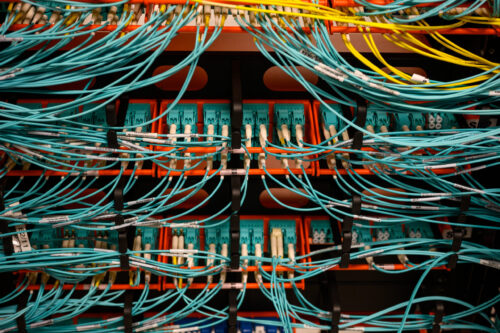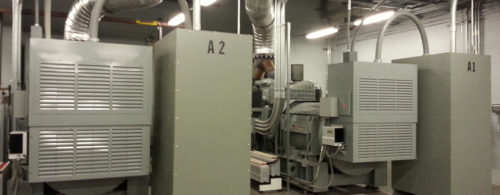Wireless evolves to meet a new range of challenges
Efficiency and productivity on the plant floor are crucial components to delivering consistent product quality, minimizing downtime, and improving customer satisfaction.
When using wireless network systems to enhance communication capabilities between plant devices and personnel, manufacturers can increase overall process automation, improving efficiency and productivity. By eliminating the wire limitations experienced with conventional systems, wireless networking systems provide improved data logging, process monitoring, and control, while maintaining the highest level of security and integrity.
Further, today’s advanced communication technologies work together to ensure reliable and deterministic signal transfers, enabling these systems to integrate with almost any application. With their highly diverse performance capabilities, ranging from temperature/pressure control and position detection to error proofing and machine monitoring, wireless systems can seamlessly meet manufacturer’s ever-evolving requirements.
Compact, power-efficient
Most modern, well-designed remote monitoring solutions offer reliable wireless communication by integrating most of the necessary components into a single, palm-sized, inexpensive unit. A radio, power controller, RTU components, and I/O terminals contained within a single housing rated for outdoor use eliminates the need for an additional enclosure.
These wireless industrial I/O devices are compact, easy to install, and easy to move to a new location when the application requirements change. A single wireless I/O device can collect both digital and analog sensor readings and forward this data to a central collection point for analysis. The ability to form large-scale networks to log and track data across a wide area creates new opportunities for managers and plant operators to identify trends that need an immediate response or provide the information needed to make decisions regarding equipment use or personnel assignments.
To accommodate remote monitoring needs in locations without power, optimized wireless I/O devices using advanced power management technology operate from a single battery pack for several years. State-of-the-art power management systems are configured to extend battery life up to 10 years by engineering the radio system to operate in a low-power mode that consumes very little power.
The power management system periodically samples the sensor and report data at defined intervals. Depending on the needs of the monitoring application, the sensor sampling intervals can be configured to sample data a few times a second for a quick response, or a few times an hour to maximize battery life. Typically, a five- to 10-year battery life can be achieved by optimizing the sensor’s sample rate to preserve power and still provide constant radio communication.
Wireless systems improving process automation
One of the most common needs in any industrial environment is process monitoring. Formerly, process monitoring was a time-consuming process and required manually collecting data for later analysis. In many cases, this data could not be analyzed until hours or days later when the opportunity for increased efficiency had passed.
In one example application, a cardboard goods printer struggled with an inability to track machine operators’ efficiency and performance as measured against standard production rates. Decreases in efficiency and the availability of unused machinery were not accounted for until the end of the month when the operator data was manually entered into a spreadsheet.
Instead of relying on manual data collection, the printer used wireless technology to monitor job start and stop times, parts totals, and average run time. As jobs were completed, a light above the machine signaled the operator and an e-mail was sent to notify the manager.
The wireless efficiency monitoring system increased productivity by 20%, resulting in payback on the deployment costs within 12 months of installation. Idle machines were better used and operators were able to correct per job efficiency numbers sooner thanks to the instantaneous data capture and calculation/display. Plant management felt they had information at their fingertips on which to base corporate decisions regarding capital equipment and personnel investments.
In a similar example, lack of production data meant that managers were unable to determine the exact cause of productivity shortfalls. Machine operators blamed machine downtime for the failure to meet production goals, and maintenance personnel blamed operators for working too slowly. To determine where the problem was, this facility needed to accurately measure and report machine run time to a control location for analysis.
Wireless technology was used to automatically collect real-time data. Accurate work time was gathered at the welding machine and wirelessly transmitted to a central control location for logging without running new data wires or interfering with the layout of the production line. Based on this new, real-time data, the facility managers were able to accurately verify when the delays were the result of machine downtime and when they were the result of operator inefficiency, and make corrections to improve the overall manufacturing process.
Decreasing energy use
Wireless technology can be used for more than production data collection; it can be an integral part of a company’s commitment to improving the energy efficiency of a plant.
Several applications of wireless technology have been used to monitor and control energy use in production facilities, including shutting down cooling equipment that had been left on after work hours, minimizing the use of heavy electrical use equipment during peak use hours, or cycling cooling equipment on or off based on a specific need instead of a timer.
In one case, a large manufacturer was being billed about $50,000 a month in peak use penalties and wanted to improve its energy efficiency to avoid these charges.
The manufacturer had installed a “smart” power system to keep the power efficiency between 95% and 100%. The plant’s power was switched through six large banks of capacitors located about 100 ft away from the building. Unfortunately, the data collection for the system was done manually only a few times a day, preventing operators from knowing they were drawing more power than desired until someone manually checked the system.
A wireless monitoring and notification system was used to monitor the energy use and automatically alert personnel as soon as energy use drifted outside the desired range, eliminating the need for someone to manually check the power system several times a day.
In a similar installation, wireless technology automatically monitors the operating status of a large chiller unit and triggered an alarm before the chiller unit could overheat and damage expensive equipment.
In these applications, the wireless network was able to save money and energy quickly enough to pay for the investment in wireless technology within a few months of installation.
Whether your process engineering application needs to be a cost-effective solution for single-point monitoring or include hundreds of data points, the new generation of wireless products and sensors offer reduced installation time, multiyear battery life, reliable radio communications, and simple integration into existing plant-wide control systems. These new wireless networks offer a simple solution to increase productivity and reduce overhead costs without sacrificing ease of use.
Schnelbach is technical content architect for Banner Engineering’s SureCross Wireless Product Division.
Do you have experience and expertise with the topics mentioned in this content? You should consider contributing to our CFE Media editorial team and getting the recognition you and your company deserve. Click here to start this process.



